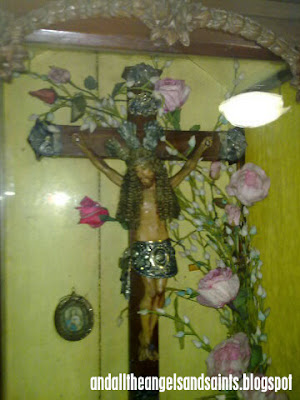Christmas is a time not just for bringing out Nativity sets but also for heirloom figures of the reclining Infant Jesus, to be put on display at home--wrapped in swaddling clothes, and placed in a makeshift manger, often under the Christmas tree. In the early hours of Christmas, just after the Christmas Eve mass, the carved figure of the Child Jesus (Bambino, Niño de la Navidad) is taken out from the belen, to be kissed by the faithful as an act of reverence on the occasion of His birth. A spread of antique and vintage "Nativity Ninos" are on this spread .
ON MARY'S LAP IS SLEEPING. A contemporary Bambino, carved in wood from the Vecin Workshop, just 6 inches long. (Francisco Vecin Collection).
WHOM ANGELS GREET WITH ANTHEMS SWEET. A century-old, anatomically-correct Nino, with pronounced Chinese features. He wears a silver diadem and holds an or, now lost. One finger is stuck in his mouth.
WHILE SHEPHERDS WATCH ARE KEEPING. A 14 inch sleeping wooden Nino, with clenched fists, of vintage make. (Francisco Vecin Collection)
THIS, THIS IS CHRIST THE KING. An ancient Nino from Bohol, carved from heavy wood, with its original encarna, now peeling with age. It is just 8 inches long. Its legs are crossed. (Personal Collection)
WHOM SHEPHERDS GUARD. An antique Nino of lightwood, with feet repaired, 7 inches long (Personal Collection).
HASTE, HASTE TO BRING HIM LAUD. A miniature Bambino, 6 inches long, of contemporary make, from the Vecin Workshop. (Francisco Vecin Collection)
THE BABE. An antique figure of the sleeping Jesus, with a stocky body and crossed legs. A superb folk example just 6 inches in length. (Francisco Vecin Collection)
THE SON OF MARY. An old Belen figure of the Child Jesus, put on display during the holidays at Our Lady of Grace Church, Mabalacat City. Devotees kiss this image after the Midnight Mass.























































